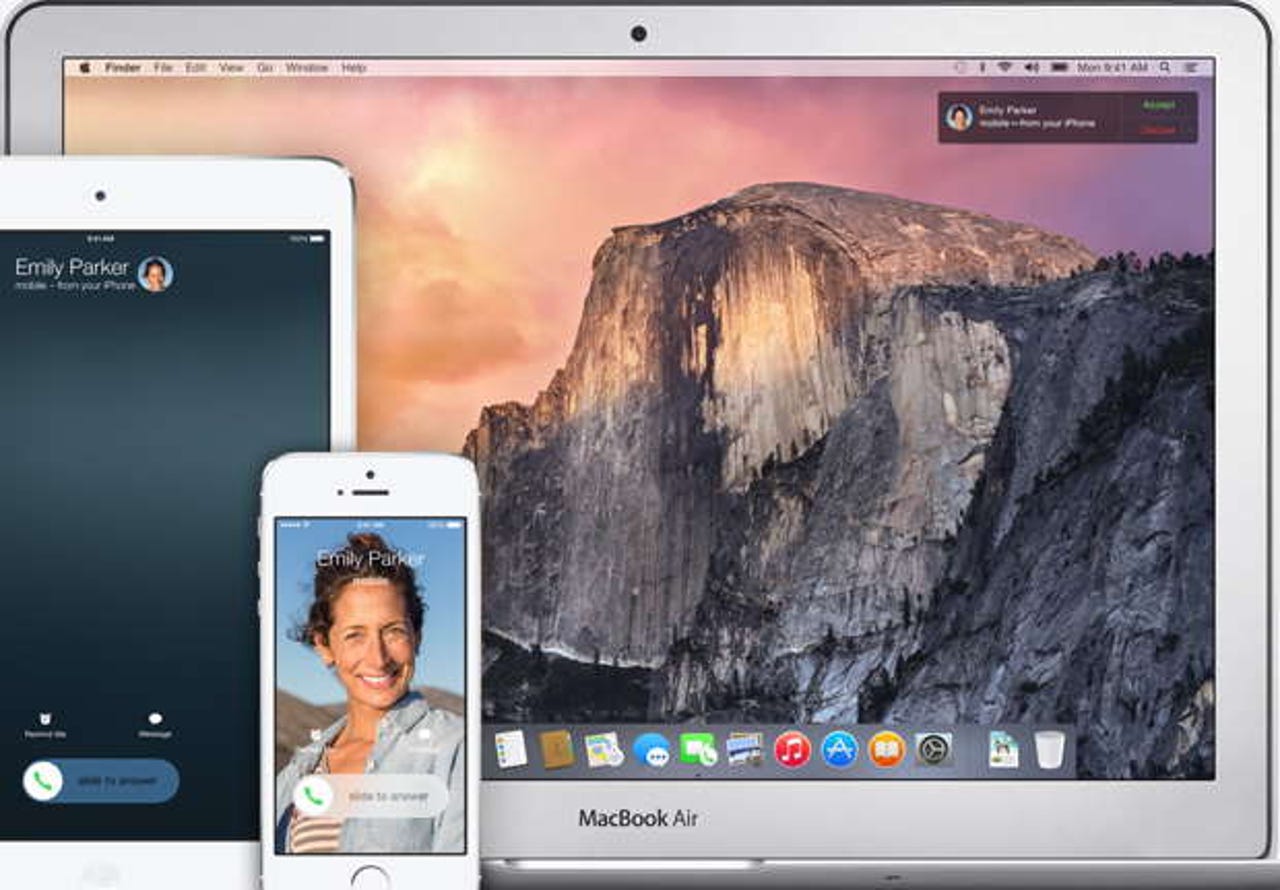Apple's forthcoming Continuity support limited to Bluetooth LE Macs

One of the best demos at this month's Apple Worldwide Developers Conference was of Continuity, the feature that will bridge iOS 8 and Mac OS Yosemite usability. Macs will be able to become extensions of iPhones and users of Apple platforms will be able to share and handoff documents seamlessly between the two hardware platforms. It will be based around Apple iCloud.

In a post on the And now it's all this blog, the programmer known as Dr. Drang talked about the changes in Continuity, and how most people think of design as how the software and hardware look, rather than how it all works together.
The infrastructure changes in iOS 8 and Yosemite, though, will make a significant difference in how we use our devices. It’ll take a while for us to get used to them—old dogs, new tricks—and it’ll take a while for the apps we use to adjust themselves to the new possibilities, But Continuity, Extensions, iCloud Drive, the new Spotlight, and the API updates will make how we use our Apple devices next year distinctly different from how we use them this year. This, more than flattening or translucency, is real design.
However, according to German site apfeleimer.de, Handoff capability will require Bluetooth low energy, a k a Bluetooth LE. According to the report, the current Mac models that will support Yosemite's Handoff include:
MacBook Air (Mid 2011 or later)
MacBook Pro (Mid 2012 or later)
Retina MacBook Pro (All models)
iMac (Late 2012 or later)
Mac Mini (Mid 2011 or later)
Mac Pro (Late 2013 or later)
However, I would guess that what Apfeleimer.de is talking about is support for Bluetooth Smart, which is featured in these Apple products. This smarter Bluetooth support was touted at last year's WWDC.
Now, there is a bit of confusion in the hardware industry about these flavors of Bluetooth. Many believe Bluetooth LE was the same as Bluetooth Smart. A recent look at the spec by Joel Martin at EE Times said Bluetooth LE is rebranded as Bluetooth Smart.
Low-energy compliant Bluetooth (Bluetooth LE) technology was introduced by Nokia under the name Wibree in 2006. In June 2010, it was adopted into the Bluetooth Special Interest Group's specification 4.0, enabling the expanded use of Bluetooth technology in the areas where optimizing power consumption of portable devices is key. The focus initially of this technology was in benefiting mobile phone battery life. In 2011, we began seeing BLE being more commonly referred to as Bluetooth Smart.
Featured
However, the problems with compatibility between Bluetooth 4.0, Bluetooth LE and Bluetooth Smart flavors are described in a comment by EE Times reader y_sasaki.
In my understanding the brand name "Bluetooth Smart (Smart Ready)" is effort to solve initial confusion between "Bluetooth LE" and "Bluetooth 4.0" as well as compatibility issue. Often misunderstood that "Bluetooth 4.0" = "Bluetooth LE", but Bluetooth mode (BDR, EDR, +HS, LE) are independent from Bluetooth versions. Simple version designation - "Bluetooth 4.0" does not necessary mean it has low power mode (LE), but it COULD have high-speed mode (+HS). In order to clarify Bluetooth product specification, you must write version and mode separately - like "Bluetooth 4.0 BDR/EDR/LE". It is rather handful, not many Bluetooth product catalogs are written in that way.
Worse, "Bluetooth 4.0" product MAY or MAY not have intercompatibility because it could be "Dual mode" or "Single mode". Dual-mode device have BDR (possibily EDR too) and LE mode, but single-mode device have either BDR or LE mode only. Certainly dual-mode devices are compatible, but single-mode BT4.0LE device is not compatible with single-mode BT4.0BDR/EDR device. It is confusing, at least for me.
So, Bluetooth SIG decided to give more easy-to-understand designation. "Bluetooth Smart" is single-mode Bluetooth LE device, "Bluetooth Smart Ready" is dual-mode Bluetooth device. "Smart" device works with "Smart" or "Smart Ready.
More on this will no doubt follow.